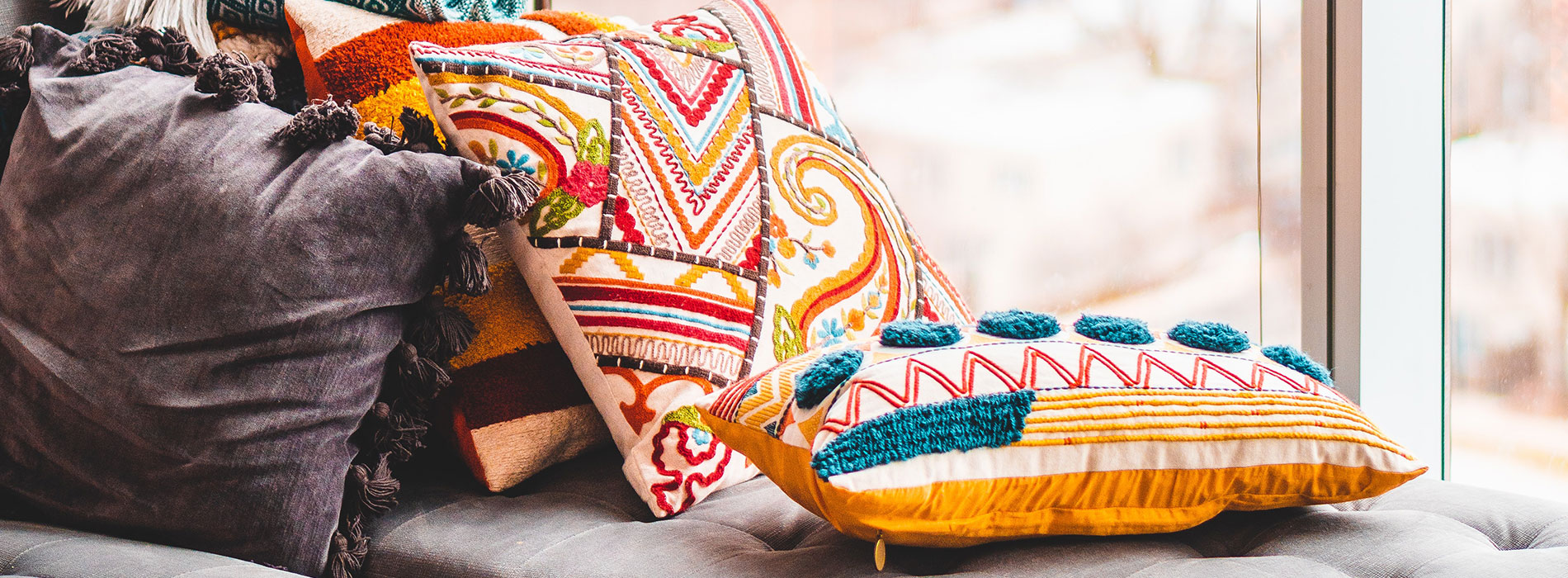If white no longer gives you enough energy, it’s time to risk and decorate with unlikely color combinations. Give your home more personality and take a risk by combining green and pink, yellow, blue, and red. Surprise your guests with a bold design.
How to combine colors?
Although unlikely and unexpected, color combinations have to make sense together. Otherwise, you will get nothing more than a confusing set of colors.
The tips we present below are perfect for you if you are starting a project but don’t have much experience with putting shades together yet.
Chromatic circle
To find out which tones should be together, you should start by using the chromatic circle.
The chromatic circle of colors consists of three primary colors. Each primary color has a complementary color, called the secondary color. In this circle, there are also tertiary colors.
- Primary colors: yellow, red, and blue.
- Secondary colors: the mixture of two primary colors.
- Tertiary colors: the mix of primary colors with secondary colors.
But the question is: how to combine the right colors? To do so, you should follow one of the following methods!
Complementary color combination
Complementary colors are opposites on the chromatic circle and present brighter contrast between each other. Examples are red and green, yellow and purple.
These junctions result in an explosion of colors to give rooms liveliness and energy.
Triad of colors
If you want to be even bolder, you can use a three-tone combination. For this option, you should choose three different shades far apart from each other within the circle.
However, the three chosen colors must be at equal distances. That is every four shades.
A widely chosen scheme is blue, red, and yellow. Although these colors create great contrast, the vibrant combination is quite harmonious.
Analogous Combinations
This color scheme allows you to combine two to five colors next to each other in the chromatic circle.
Generally, this technique helps create a calming effect in rooms and also a gradient of color.
Although you can combine up to five shades, it’s best to use only up to three colors. Unlikely combinations
The combination of neutrals is already more than seen. It’s hard to make a statement with black, gray, beige, brown, or other colors that are easy to combine.
Surprise yourself and your guests with a fascinating and sober explosion of color.
Green and Pink
This combination is reminiscent of spring, flowerbeds blooming, and forests turning color.
They are complementary colors once they are on opposite sides of the chromatic circle.
These two colors are rarely used in interior decoration. However, the combination has won fans for its charming and welcoming feel.
Blue and orange
This combination is also a very cheerful one. You can choose the brightest shades of blue and orange if the idea is to create a design inspired by summer homes.
But you can also opt for more sober tones within the same color palette. Instead of orange, you can choose a more earthy orange or softer shade like salmon.
Orange, green, and lilac
This trio is one of the most delightful ones. Using this triad combination, you can create a cheerful space full of positive energy.
Of course, the goal is not to paint a wall with one of these colors. The idea is to play with the decorative objects and furniture. Choose different colors for the sofa, sideboards, dressers, or bed.
In the kitchen, you can bet on appliances in different colors to contrast with the furniture painted in one of these colors.
As you’ve seen, you don’t need to be afraid of using colors. You only need to know how to combine them to achieve a harmonious, fun, and cheerful design.
